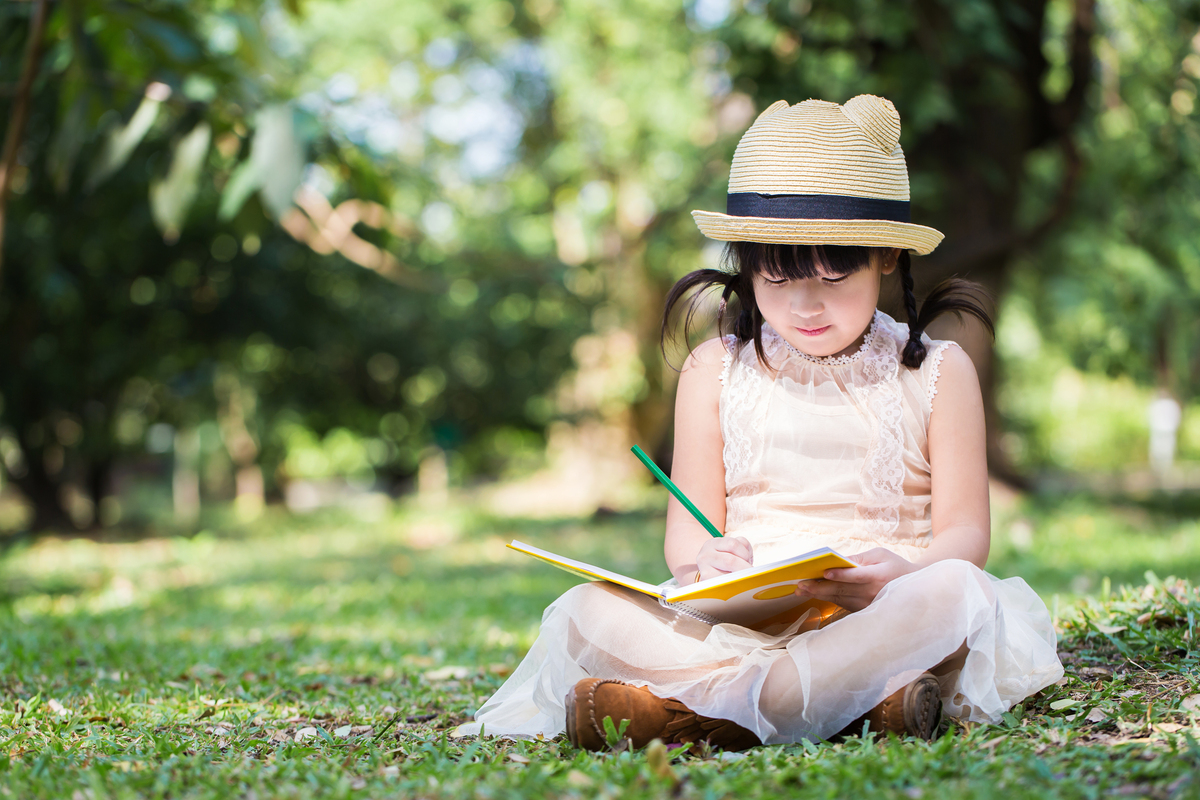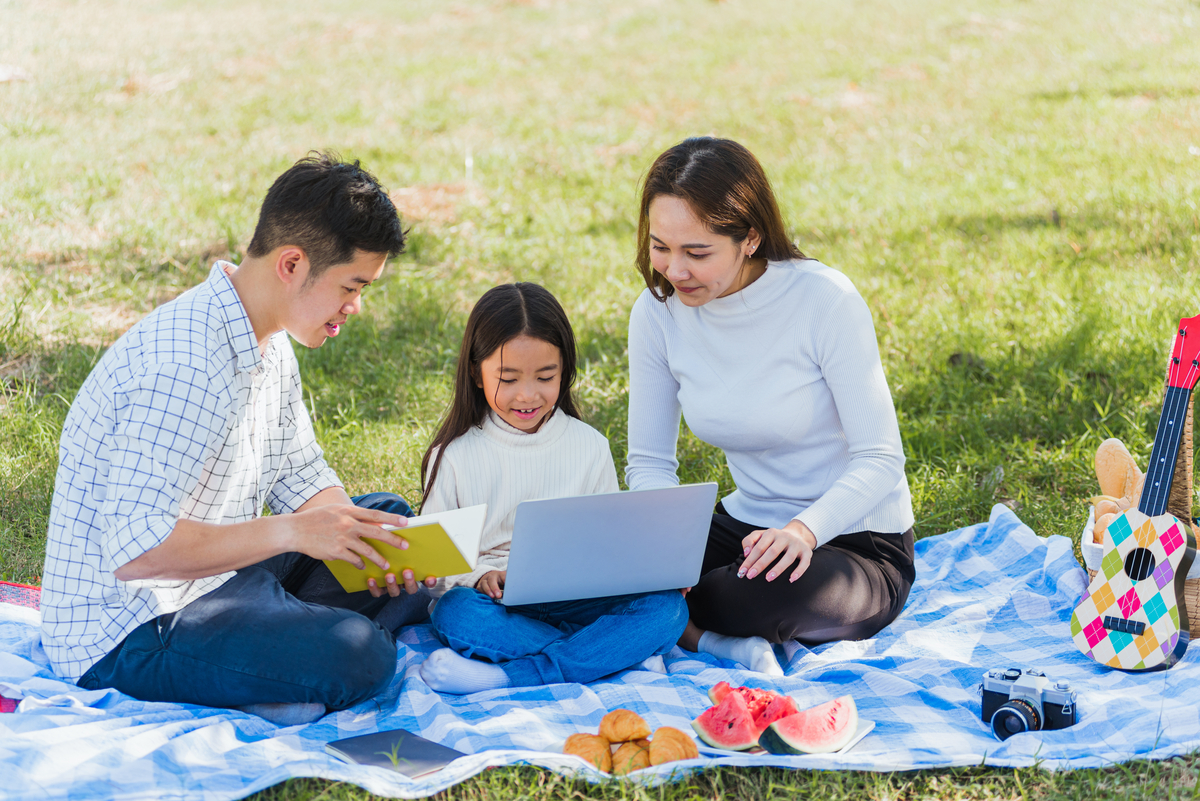
As parents, we hope for our children to thrive and grow into happy and confident learners. Most parents have indoor learning under control, but how about taking learning outdoors too? The dynamic environment outdoors can spice up the learning experience and brings a host of benefits when math and outdoor learning comes together. With Singapore known for being a “Garden City”, take the opportunity to bring learning outdoors as you enjoy the green spaces and nature all around us.
Let’s dive into the science and mathematics of outdoor learning.
Science-Based Benefits of Math Outdoors
According to a study by Pekrun and Linnenbrink-Garcia, acute doses of nature, whether through a window view of a tree-lined street or a walk in a park, have positive aftereffects on attention and working memory.
The idea that learning can only take place in a closed classroom while being a fairly “modern history” idea is antiquated and inaccurate. Studies suggest that students retain more academic information specifically in math and biology both during and after lessons conducted in nature or outdoor settings. Being outdoors reduces stress in children (and adults) and helps to reset and refocus attention allowing for greater concentration, connection & comprehension. In fact, studies have shown that learning outdoors increases students’ interest in the subject being taught and their overall desire to learn.
On the very base level, being outdoors increases natural serotonin and dopamine. Those are the chemicals in your brain that make you happy and relaxed, creating the ideal learning environment.

Standford’s Development and Research in Early Mathematics Education Department takes this math learning a step further. In their research, they show that incorporating nature play into early math learning helps develop stronger problem-solving and critical thinking skills. This helps guide children to see the natural world mathematically, incorporating how children instinctively play outdoors into a practical math lesson. Whether the child is nature lover or just a lover of wild freedom, there are places to develop and encourage math skills that will inspire a greater understanding of math throughout their lives.
Professor Saw Seang Mei, the Head of Myopia Research Group from Singapore Eye Research Institute (SERI), also shares that having more outdoor play can help in preventing or slowing down myopia in children. Bring your child outdoors and expose them to a healthy dose of sunlight to help your child maintain good eyesight!
Math and the Outdoors at Home
So all of that information is nice, but how do you apply it? If you’re an educator, the answer is simple enough, consider an outdoor classroom day! For non-educators, you may wonder how to apply these principles at home. We’ve got a few easy recommendations to get you started. Note, whether you have a balcony at home or you’re checking out the nearby park, the benefits of sunshine, greenery, and fresh air are the same. No outdoor space is inadequate for learning opportunities.
Outdoor Math Activities
One of the simplest ways to apply outdoor learning is to have some math activities outdoors. Take some math books along to the nearby park and find a cushy spot for a relaxing reading session! You can also consider doing some fun math activities that make use of the dynamic surroundings around you and incorporate math in. Here’s a fun Scavenger Hunt math activity for K1 to P1 kids and P2 to P5 kids to get you started.
Online Enrichment Unplugged

Taking part in an online math enrichment programme like Spark Math has numerous benefits to improved math skills on its own. But level up the learning by moving those online classes to an offline space. Consider finding an outdoor space with WiFi to take any kind of online-based curriculum outside. Reap the benefits of classroom structures while exploring the benefits of outdoor learning. This type of learning is especially great for children with neurodiversities because it allows for utilising two proven learning methods in a way that provides them with the greatest opportunities for success.
Outdoors Chores
Another great way to explore math and outdoor learning at home is through housework or chores. This starts to explore the child’s curiosity and problem solving skills combined with practical math. As this becomes an extension of their learning space it also becomes an extension of their responsibility to keep clean and tidy. Whether this is your time to discuss money and what it takes to earn it, or natural math by engaging conversation about estimations, time management, accumulation etc. Creating chores around outdoor spaces is a great way to stretch their legs and their learning.
Math Lessons by Mother Nature
Mother nature has a lot to teach us. Taking the opportunity to engage your child in these rich and beautiful natural math wonders can develop your child’s excitement and connection to math in the world around them. With the Park Connector Network (PCN) offering extensive routes across the entire country, make good use of the PCN to give your child an exciting math lesson in the midst of nature! Consider making small changes to improve and engage your child’s natural math wonder.
If you’re looking for a programme to improve your child’s math skills and still be able to take it outside, try Spark Math today! Sign up for your free trial class to see how Spark Math can engage and excite your child’s math curiosity!




